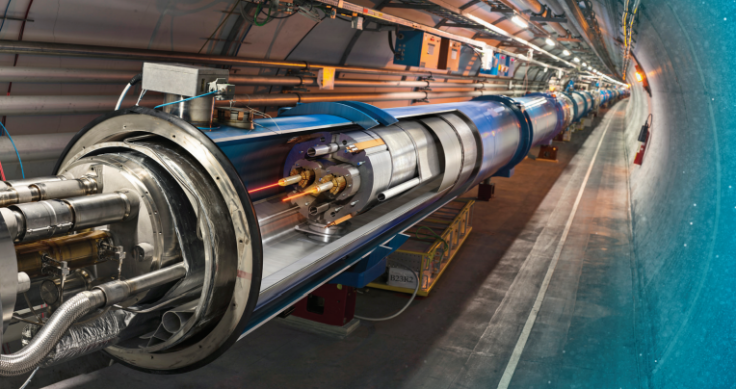CERN LHC Update: After Successful Proton Run, Focus Shifts To Heavy Ion Collisions

The Large Hadron Collider (LHC) -- the world’s most powerful particle accelerator -- has successfully finished its “proton run” for this year, scientists at the European Organization for Nuclear Research (CERN) announced Wednesday. The collider will now be prepped for heavy ion collisions scheduled to begin later this month, in experiments that would help researchers recreate conditions that existed in the primordial universe.
“The accelerator has been performing well given the challenges of running at the new collision energy of 13 teraelectronvolts (TeV),” Mike Lamont from the LHC Operations team said, in a statement released Wednesday. “We're currently running with 2244 bunches of protons in the machine, spaced at intervals of 25 nanoseconds, which is an achievement in itself.”
The LHC, which is credited with the discovery of the “God particle” in 2012 -- restarted for “Season 2” early in June, and has, since then, been colliding beams of protons to detect hitherto unknown subatomic particles. As CERN explains, the particles are so tiny that the task of making them collide is “akin to firing two needles 10 kilometers [6.2 miles] apart with such precision that they meet halfway.”
With each collision, the LHC’s massive detectors gather colossal amounts of data, which physicists across the globe will now spend months poring over to look for clues to the origin and composition of the cosmos. Physicists hope that the detection and subsequent study of new particles could provide answers to some of the most fundamental questions of the universe, such as why there is an abundance of matter and lack of antimatter, and the make-up of mysterious "dark matter," which is believed to constitute over 84 percent of the matter in the cosmos.
Whatever the discoveries might be, scientists expect them to “break” the Standard Model of particle physics, which currently governs our understanding of the quantum world.
For now, though, the focus shifts to the studying lead ion collisions, in which the hundreds of protons and neutrons in two lead nuclei are smashed into one another at energies of over a few trillion electronvolts each. This creates a miniscule fireball in which everything “melts” into a quark-gluon plasma.
Quark-gluon plasma, as the name suggests, is a mixture of quarks -- the fundamental particles that make up protons and neutrons, and gluons -- the force carriers that bind quarks together.
Scientists believe that for a few millionths of a second after the big bang, the universe was composed entirely of a hot, dense soup of this plasma. And, in order to recreate these conditions, massive ions -- such as gold or lead -- are made to collide head-on. Scientists hope the collision debris will yield exotic particles like pions, kaons, antiprotons and antineutrons.
“In this run we will also have much larger statistics to work with and our detector has been significantly upgraded since the LHC’s first run. So we now have a better instrument to study the system to a much higher precision and at even higher temperatures,” Paolo Giubellino, a spokesman for the ALICE experiment at CERN, said, in the statement.
© Copyright IBTimes 2024. All rights reserved.






















